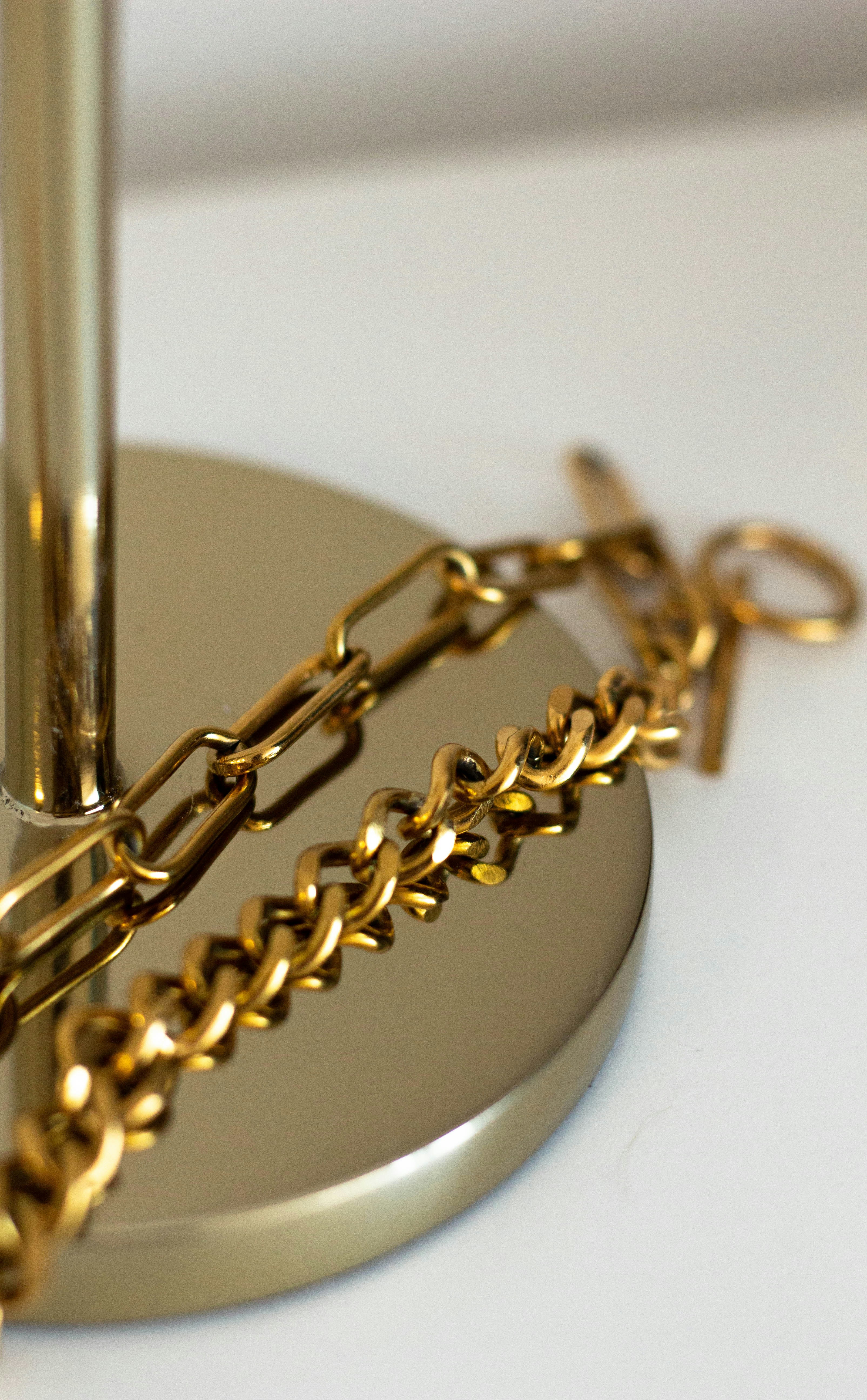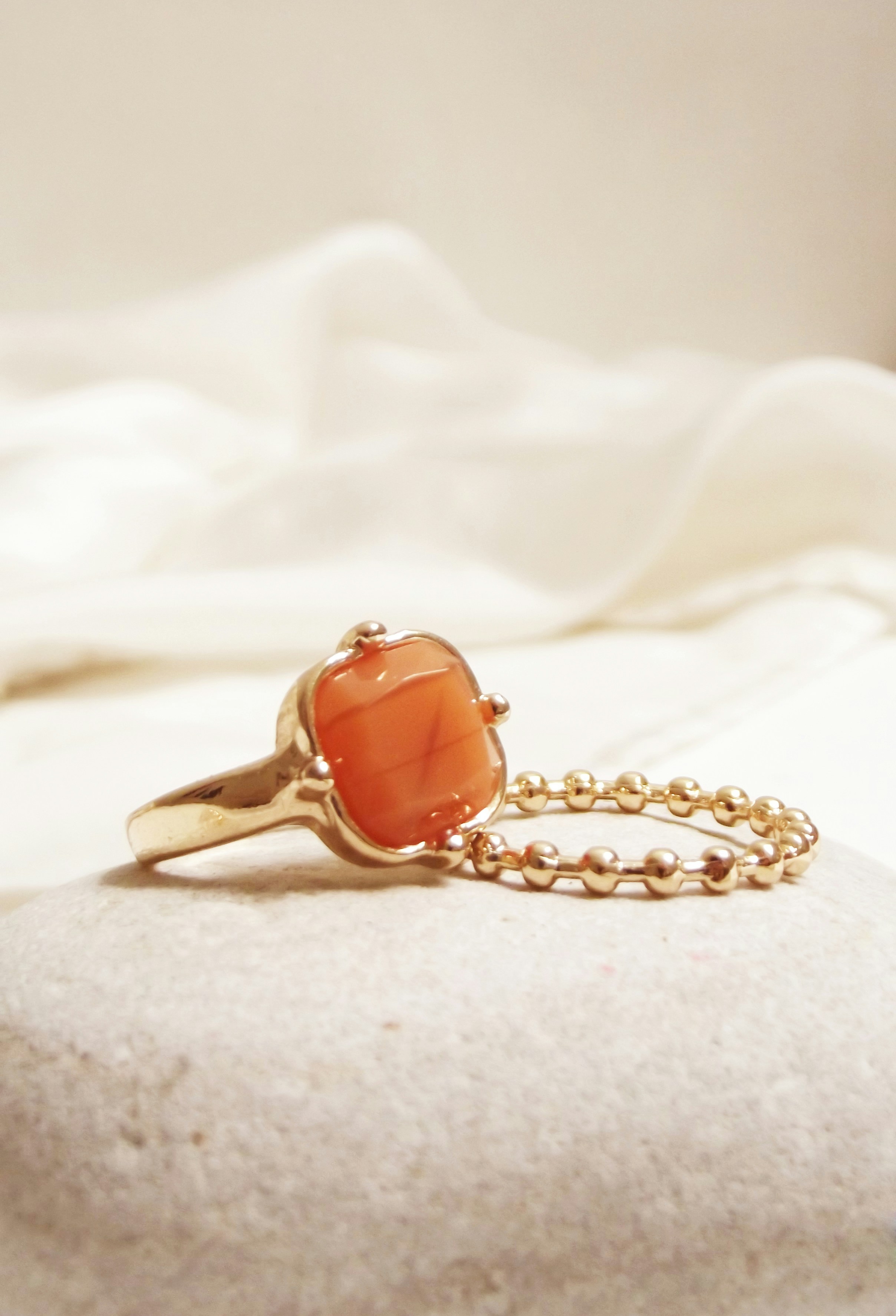1940s Jewelry Trends
Alexander Kellerson

Introduction to 1940s Jewelry Trends
The 1940s were a fascinating decade for jewelry trends, heavily influenced by the socio-economic backdrop of World War II. As resources became scarce, jewelry designs evolved to reflect both the austerity and creativity of the era. This period saw a shift towards more affordable materials and inventive designs that still captivate collectors and fashion enthusiasts today.
Despite the challenges of wartime, jewelry remained an important means of self-expression. Women of the 1940s often used jewelry to add a touch of elegance and glamour to their otherwise utilitarian wardrobes. The styles from this era continue to inspire modern designers and jewelry lovers alike, showcasing a timeless appeal.
From bold, statement pieces to delicate, feminine designs, 1940s jewelry trends were diverse and dynamic. This article explores the popular materials, iconic designers, and enduring legacies of jewelry from this pivotal decade, offering insights into both historical and contemporary contexts.
Popular Materials in 1940s Jewelry
During the 1940s, the use of materials in jewelry making was greatly influenced by the constraints of World War II. Precious metals like gold and platinum were reserved for the war effort, leading jewelers to get creative with alternative materials. As a result, sterling silver, brass, and even plastic became popular choices for jewelry design.
In addition to metals, 1940s jewelry often featured colorful, eye-catching gemstones. Semi-precious stones such as citrine, aquamarine, and garnet were commonly used, adding vibrancy and flair to various pieces. The scarcity of high-value gems did not hinder creativity; instead, it encouraged the use of more accessible and innovative materials.
Another notable trend was the rise of costume jewelry, which utilized non-traditional materials like rhinestones and glass. This democratization of jewelry made stylish accessories available to a broader audience, allowing women from all walks of life to adorn themselves with beautiful, yet affordable pieces.
Influence of World War II on Jewelry Design
World War II had a profound impact on jewelry design in the 1940s. With many precious materials being rationed for the war effort, jewelers had to find innovative ways to continue creating beautiful pieces. This led to a surge in the popularity of costume jewelry, which utilized less expensive materials without sacrificing style.
Patriotic themes became prevalent in 1940s jewelry, reflecting the collective spirit and resilience of the time. Symbols such as stars, stripes, and eagles were frequently incorporated into designs, serving as a reminder of national pride and solidarity. These pieces were not only fashion statements but also carried significant emotional value.
The war also influenced the practical aspects of jewelry design. Pieces were often made to be multifunctional, with brooches that could be converted into pendants or clips that served multiple purposes. This adaptability was a reflection of the resourcefulness and ingenuity that defined the era.
Iconic 1940s Jewelry Designers
Several jewelry designers rose to prominence in the 1940s, leaving an indelible mark on the industry. One such figure was Coco Chanel, whose costume jewelry designs became highly sought after. Chanel's bold use of faux pearls, colorful gemstones, and intricate detailing set new standards for elegance and sophistication.
Another iconic designer of the 1940s was Trifari, known for its high-quality costume jewelry. Founded by Gustavo Trifari, the brand became synonymous with glamour and innovation. Trifari's designs often featured intricate metalwork, enamel, and rhinestones, making their pieces highly desirable and collectible today.
Elsa Schiaparelli also made significant contributions to 1940s jewelry trends. Her avant-garde approach to design, often incorporating surrealist elements, pushed the boundaries of conventional jewelry aesthetics. Schiaparelli's daring use of color and unique motifs continue to inspire modern designers, cementing her legacy in the world of fashion.
Trends in 1940s Costume Jewelry
Costume jewelry experienced a golden era in the 1940s, largely due to the economic and material constraints of World War II. With precious metals and gemstones being scarce, costume jewelry provided an affordable and stylish alternative. Pieces were designed to mimic the look of fine jewelry, using materials like rhinestones, glass, and plated metals.
One of the key trends in 1940s costume jewelry was the use of bold, statement pieces. Large brooches, oversized earrings, and chunky necklaces were all the rage, allowing women to make a fashion statement even during challenging times. These pieces often featured intricate designs and vibrant colors, adding a touch of glamour to everyday outfits.
Floral motifs and patriotic symbols were also popular in 1940s costume jewelry. Brooches shaped like flowers, leaves, and other natural elements were common, as were pieces featuring stars, flags, and eagles. These designs not only added beauty to the wearer's ensemble but also reflected the cultural and social sentiments of the era.
1940s Engagement Rings and Wedding Bands
Engagement rings and wedding bands from the 1940s reflect the era's blend of tradition and innovation. Due to wartime restrictions on precious metals, many rings were crafted from alternative materials such as palladium and sterling silver. Despite these limitations, the rings were designed with elegance and durability in mind.
The designs of 1940s engagement rings often featured intricate detailing and smaller, more affordable gemstones. Solitaire settings were popular, as were rings with intricate filigree and milgrain accents. These styles highlighted the craftsmanship of the era, creating timeless pieces that continue to be cherished by vintage jewelry enthusiasts.
Wedding bands from the 1940s frequently incorporated engraved patterns and motifs. These bands were often simpler than the engagement rings but were crafted to complement them perfectly. The use of alternative metals and innovative designs made these rings unique and memorable, a testament to the creativity of jewelers during this period.
Popular Gemstones in 1940s Jewelry
The 1940s saw a variety of gemstones being used in jewelry, each adding its unique charm to the designs of the era. Semi-precious stones like amethyst, aquamarine, and topaz were especially popular due to their affordability and availability. These stones were often set in intricate designs that showcased their natural beauty.
Pearls were another favorite in 1940s jewelry, symbolizing elegance and sophistication. Both natural and cultured pearls were used in various pieces, from necklaces and earrings to brooches and bracelets. The soft luster of pearls complemented the era's fashion trends, making them a staple in many women's wardrobes.
Rhinestones and colored glass were widely used in costume jewelry to mimic the appearance of more expensive gemstones. These materials allowed for the creation of dazzling, eye-catching pieces without the high cost. The versatility and brilliance of rhinestones made them a popular choice for everything from casual accessories to glamorous evening wear.
Jewelry Styling Tips from the 1940s
Styling jewelry in the 1940s was all about balancing elegance with practicality. Women often wore a few key pieces that could transition seamlessly from day to night. For example, a simple string of pearls or a pair of classic stud earrings could be worn to work and then dressed up with a bold brooch or statement ring for an evening out.
Layering was another popular styling technique in the 1940s. Women would often stack bracelets or wear multiple necklaces of varying lengths to create a more dynamic look. This approach allowed for greater versatility and personalization, enabling women to express their individual style even with limited resources.
When it came to formal events, 1940s jewelry was all about making a statement. Large cocktail rings, chandelier earrings, and elaborate brooches were common choices for evening wear. These pieces added a touch of glamour and sophistication to any outfit, making them the perfect finishing touch for special occasions.
Collecting and Caring for 1940s Jewelry
Collecting 1940s jewelry can be a rewarding hobby, offering a glimpse into the fashion and craftsmanship of a bygone era. When starting a collection, it's important to familiarize yourself with the different styles, materials, and makers of the time. Look for pieces that are in good condition, with intact stones and minimal signs of wear.
Proper care and maintenance are crucial for preserving the beauty and value of 1940s jewelry. Store your pieces in a cool, dry place, away from direct sunlight and moisture. Use soft, non-abrasive cloths to clean your jewelry, and avoid harsh chemicals that could damage delicate materials like rhinestones and enamel.
If you're investing in high-value pieces, consider having them appraised and insured. This provides protection against loss or damage and ensures that you have an accurate record of your collection's worth. With the right care and attention, your 1940s jewelry can be enjoyed and admired for many years to come.
Legacy of 1940s Jewelry Trends in Modern Fashion
The legacy of 1940s jewelry trends continues to influence modern fashion in various ways. The era's emphasis on creativity and resourcefulness has inspired contemporary designers to experiment with alternative materials and innovative designs. Many of the motifs and styles from the 1940s, such as floral patterns and patriotic symbols, are still popular today.
Vintage-inspired jewelry has made a significant comeback in recent years, with many people seeking pieces that capture the charm and elegance of the 1940s. From engagement rings to costume jewelry, modern collections often draw on the aesthetics of this era, blending timeless designs with contemporary trends.
The sustainability movement has also sparked renewed interest in vintage jewelry, as more people look for eco-friendly and ethical fashion choices. By investing in 1940s jewelry, collectors and fashion enthusiasts not only celebrate the artistry of the past but also contribute to a more sustainable future. This enduring appeal ensures that the trends of the 1940s will continue to inspire and captivate for generations to come.





